What Moscow looked like in the 1930s (PHOTOS)

The Red Square was the main stage for the USSR and communism. Everything under the sun could be seen on it: parades of athletes and sportsmen…

…as well as military parades…

…and even soccer games!

And below you can see a common Soviet holiday decoration of the Bolshoi Theater: “Proletarians of all countries unite” and portraits of Marx, Engels, Lenin and Stalin, 1939.

The 1930s were marked by the construction of the Moscow Metro subway system. The first line with 13 stations opened on May 15, 1935, and two more started operation in 1938.

The first train of the Moscow Metro’s third, ‘blue’, line.

New constructions appeared on the face of Moscow - elaborate, above-ground metro station entrance halls: Dynamo, for example…

…or the ‘Palace of Soviets’ metro station (now Kropotkinskaya)...

…or the Krasnye Vorota station, built on the site of the demolished triumphal arch, called the Red Gate, that interfered with the traffic of the Garden Ring automobile road.

Today, it’s so incredibly bright in Moscow, even at night, because of the street lights and signs, but, back then, the luminous letters spelling ‘METRO’ were a real novelty.
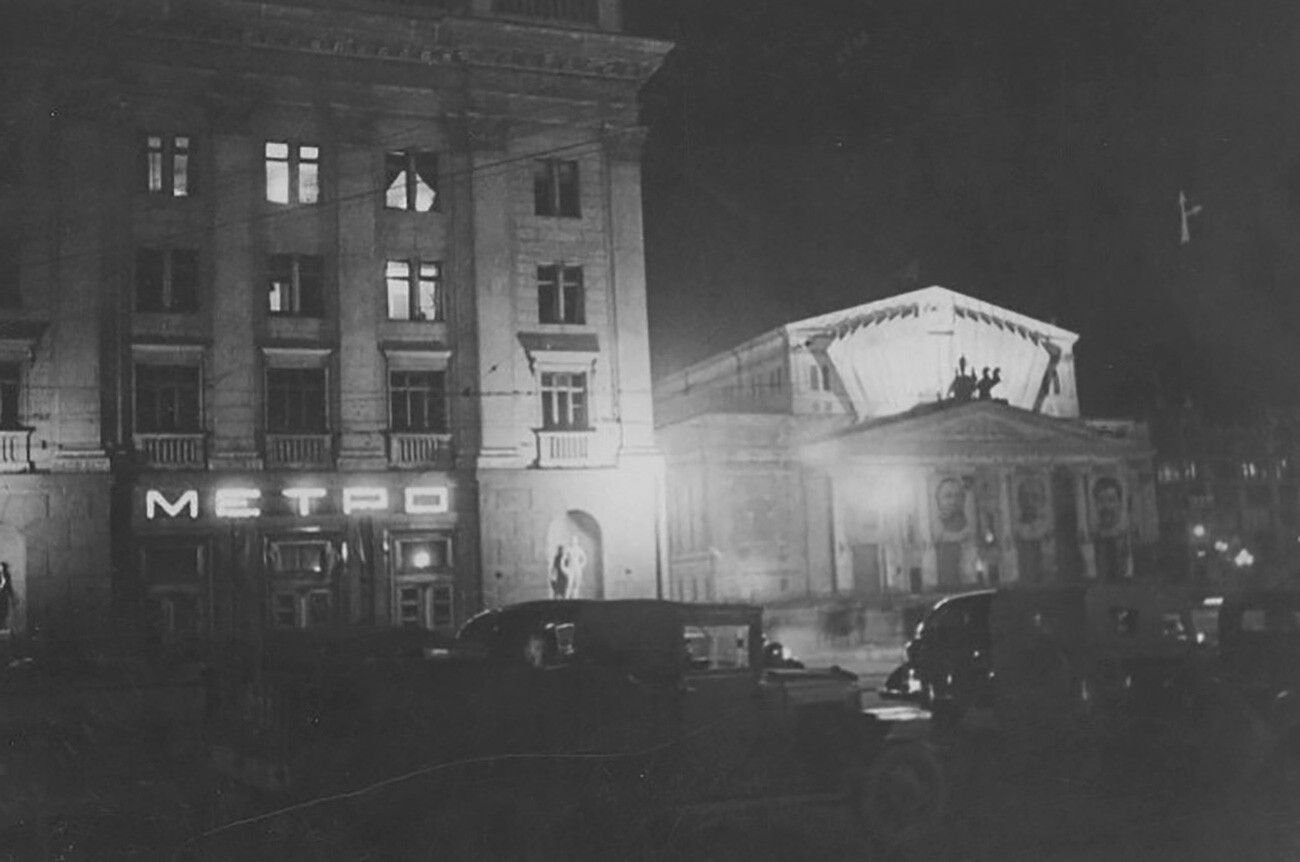
New Constructivist architecture, like the factory-kitchen building below (read more about what it is here), inspired photographers to do avant-garde shots and look for unusual angles.
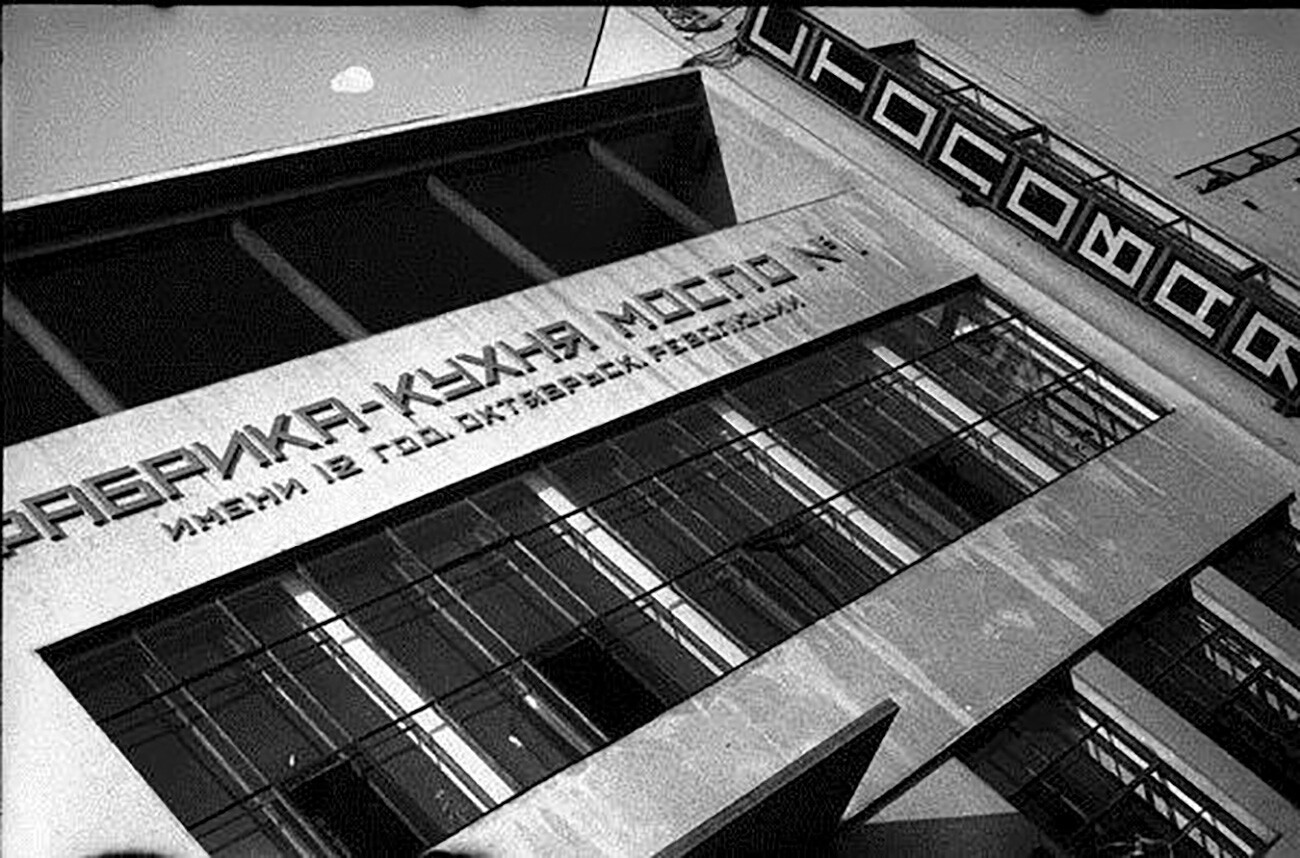
A forgotten profession – a shoeshiner.

Moscow is a true city of contrasts, which, in the 1930s, had both busy vehicle and horse carriage traffic.

This is what the taxi stand at the Bolshoi Theater in the 1930s was like…

The main Soviet writer in the 1930s was Maxim Gorky and, even while still being alive, everything was renamed after him. Soviet authorities even renamed his native city of Nizhny Novgorod to Gorky, while Tverskaya Street, the main street in Moscow, became Gorky Street.

And below is Gorky himself standing on the balcony of the Izvestia newspaper’s building with a view of… Gorky Street.

A summer cafe in Gorky (again) Park, a favorite central getaway for Muscovites. Notable in the photo below is the now-lost tower in the background. It was a parachute tower.

In the 1930s, there was a parachuting boom in the USSR and the parachute tower was a popular attraction. Anyone could jump from it with a parachute or descend down a spiral tray by sitting on a special mat. In the 1950s, however, the tower was dismantled, due to safety issues.

In the 1930s, Stalin initiated a master plan for the reconstruction of Moscow. Many old buildings that hindered the construction of large highways were demolished. And, in order to widen the streets in some places, houses were also moved, right along with their residents! (read more here).
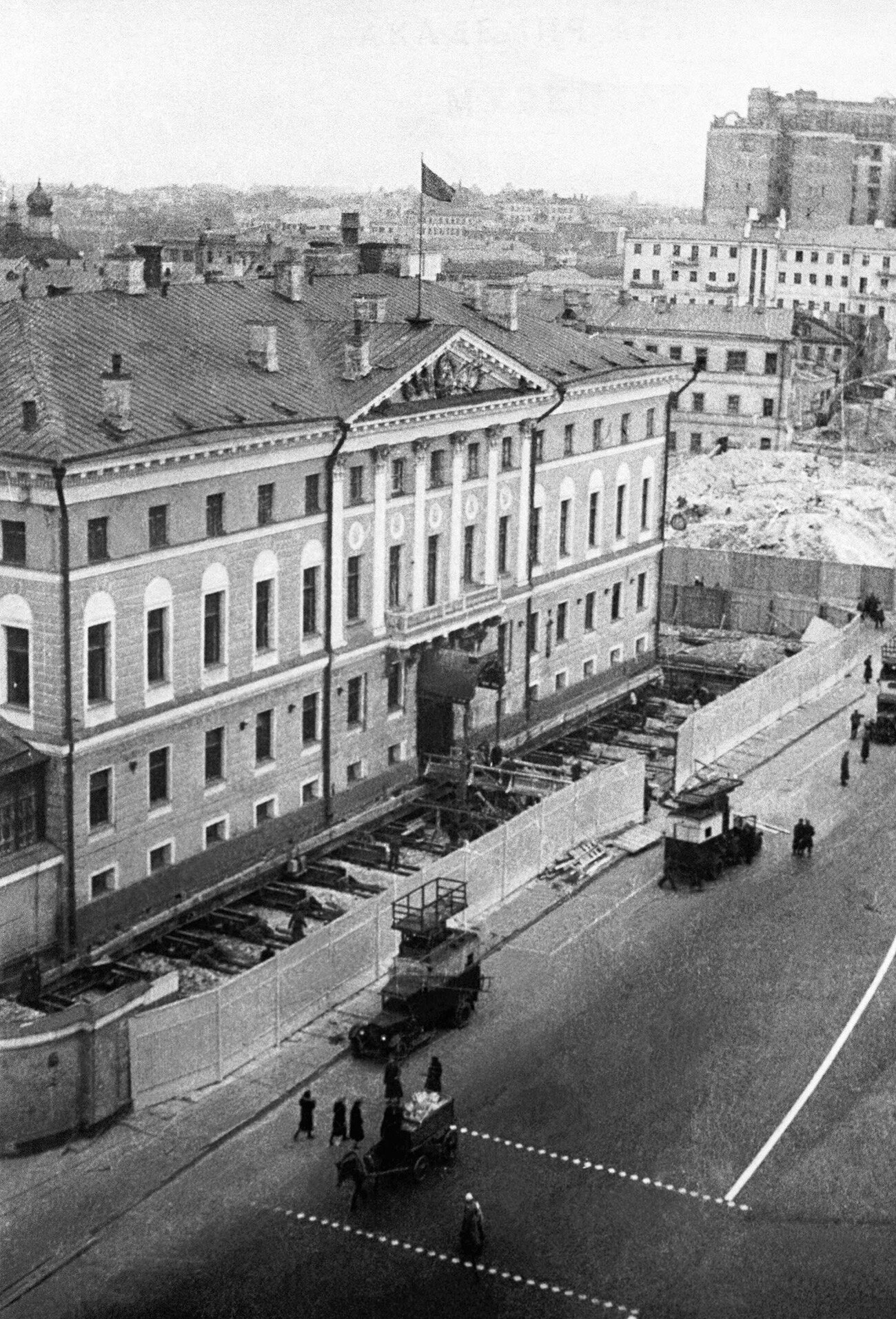
Below is how the panorama of the Moskvoretsky Bridge leading to the Red Square looked before Stalin’s reconstruction of Moscow (photo of 1930).

In 1936, an entire block of Zaryadye near the Kremlin was leveled, revealing a view of the Kremlin and the Cathedral of St. Basil the Blessed…

…making way for the new Bolshoy Moskvoretsky Bridge.

Buildings on Mokhovaya Street were also demolished in order to organize a wider passage. Also, in the background, construction of the giant ‘Hotel Moskva’ can be seen.

In the 1930s, the Sadovoye (Garden) Ring road was expanded and connected, becoming an important transportation artery of the city.

Okhotny Ryad street with its chaotic market turned into a wide street with lively traffic.

The most famous loss of the 1930s was the demolition of the Christ the Savior Cathedral, on the site of which the ‘Moskva’ swimming pool was later built.

A photographic oxymoron: the letters ‘USSR’ decorating the bell tower of the Strastnoy Monastery.

In 1931, Strastnaya Square near the monastery was renamed Pushkinskaya Square and, in 1937, the monastery was demolished.

Another lost structure is the Sukharev Tower of the late 17th century, which was demolished in 1934, because it interfered with the passage of the Garden Ring.

The Soviets got rid of most paving stones and laid asphalt on all roads (as it was cheaper and more convenient). In the photo below, they are laying asphalt on Komsomolskaya Square, with the main building of Yaroslavsky Railway Station in the distance.

The new building of the Lenin Library, the largest in the country at the time, was just built and was not yet open. In the foreground is seen the temporary ground entrance hall of the ‘Ulitsa Kominterna’ metro station (now Aleksandrovsky Sad). Today, a monument to Fyodor Dostoyevsky stands in its place.

The rare photo below shows the large-scale reconstruction of the Red Square, during which, among other things, all the paving stones were replaced with new ones.

Today, Moscow is a gastronomic paradise with thousands of restaurants, where there is no shortage of people at any time of day. And below are the rare guests of the Savoy restaurant in the 1930s. In the USSR, few people could afford to go to restaurants and public catering was limited to factory canteens.

Meanwhile, ice cream and beverage carts popped up all over the city during the summer…
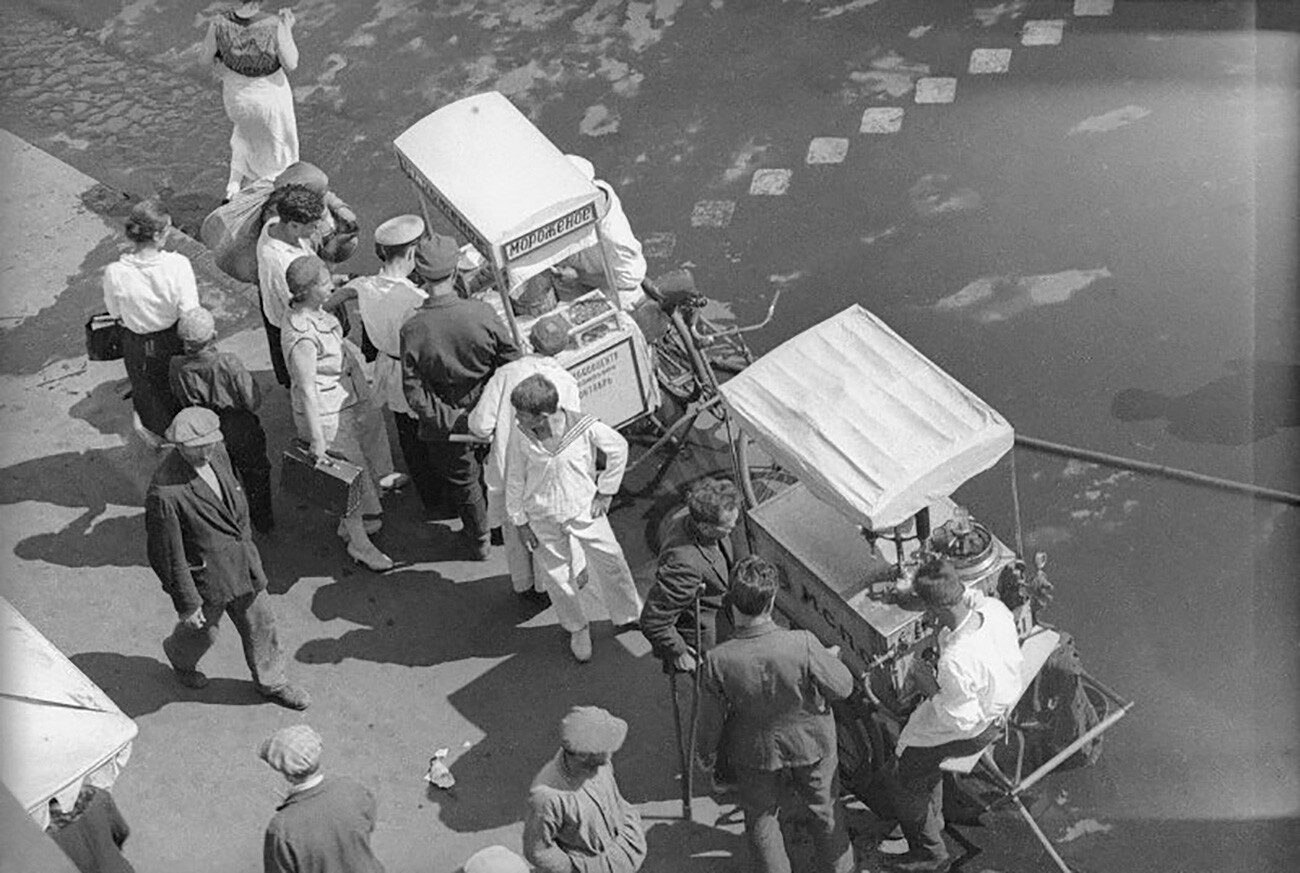
…as well as flower kiosks for the ladies.

In 1937, after being displayed at the international EXPO in Paris, the famous monument ‘Worker and Kolkhoz Woman’ by Vera Mukhina was brought to Moscow with triumph.
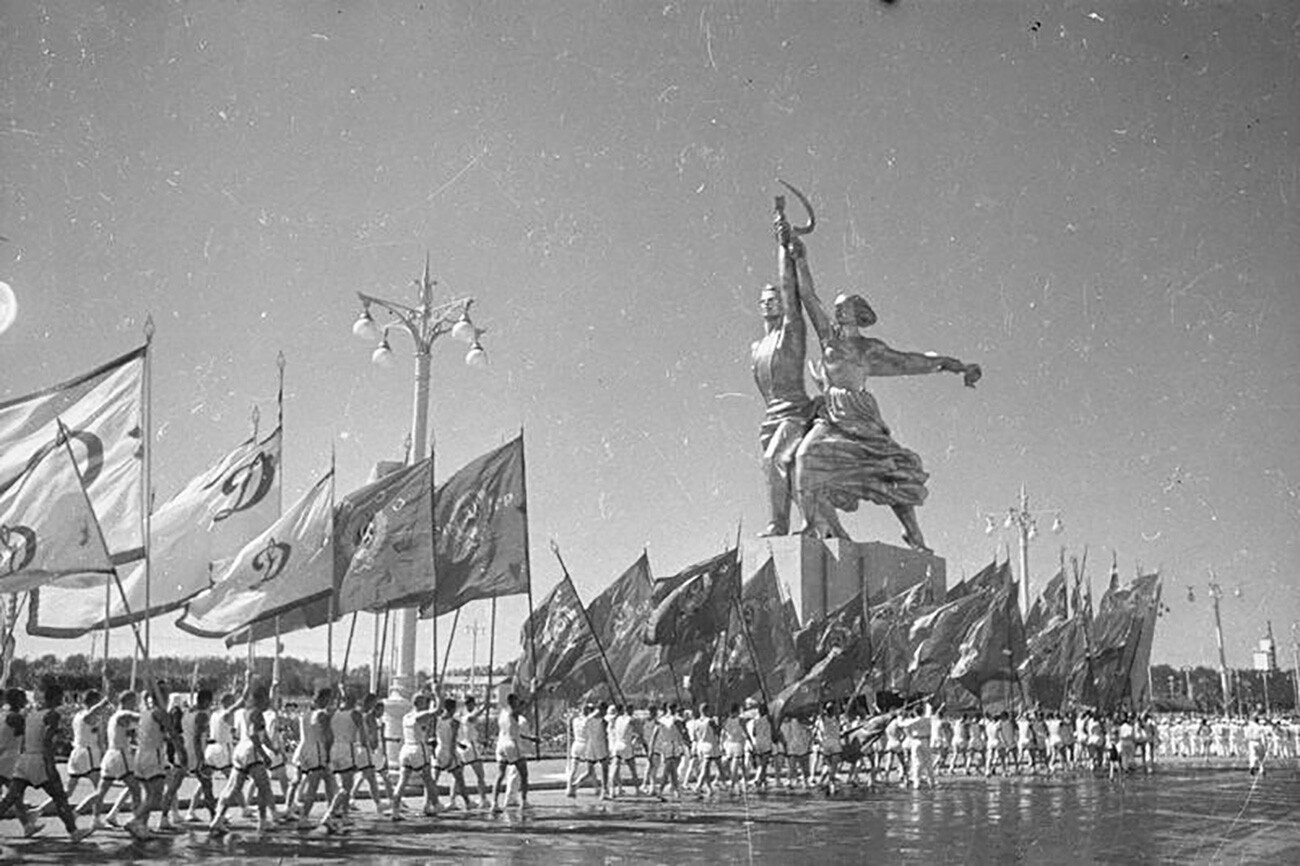
In 1939, the first All-Union Agricultural Exhibition (later and now known as the Exhibition of Achievements of the National Economy, or VDNKh) was opened. For its purpose, an impressive large-scale park was built and all its pavilions were considered masterpieces of Stalinist ‘Empire architecture’.

A giant monument to Stalin was also installed in VDNKh, but dismantled in 1951.
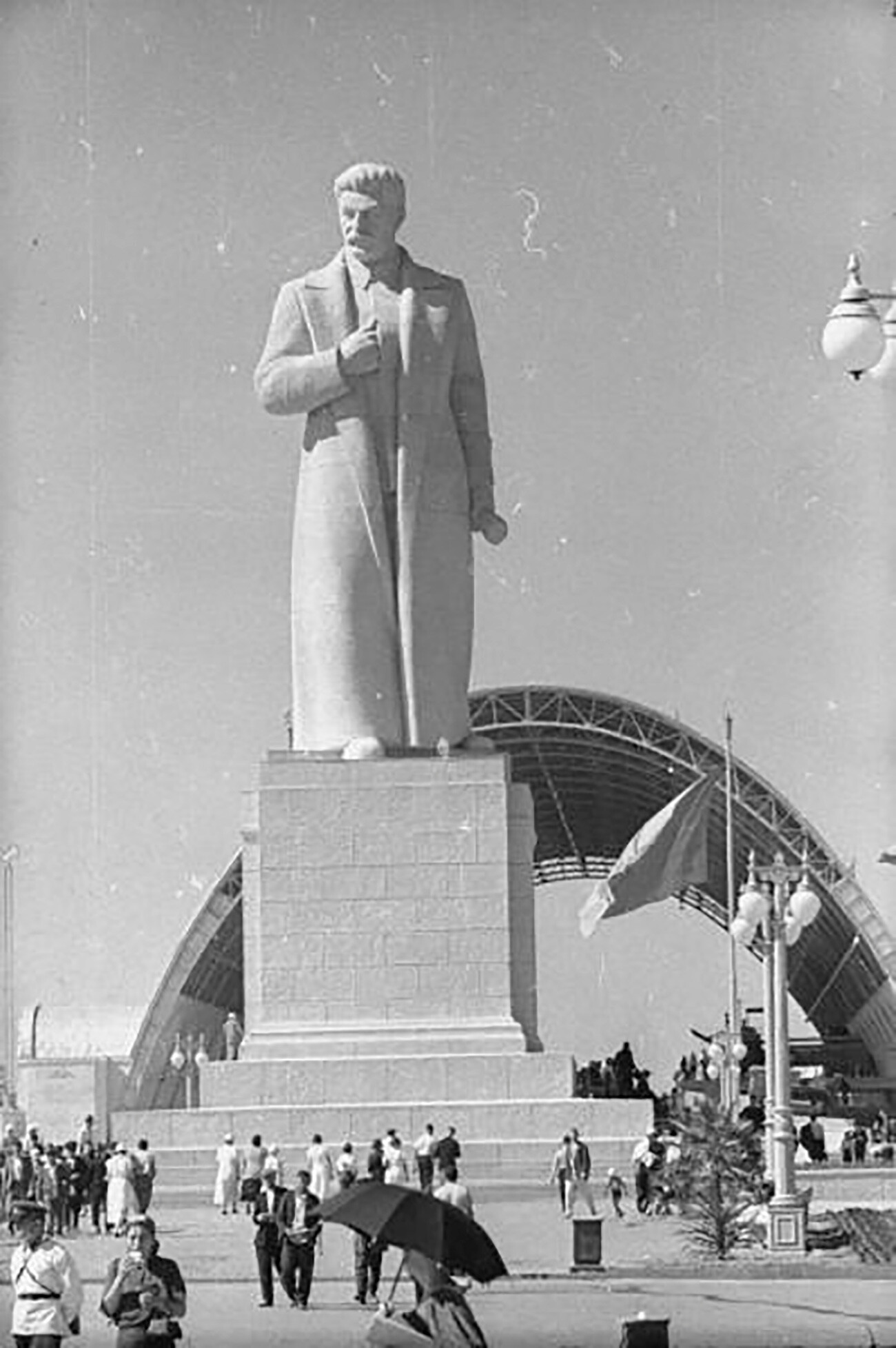
Another landmark of Stalinist architecture and Stalinist times in general, was the Northern River Station. It was built along with the ambitious Moscow-Volga Canal project, which made Moscow “the port of the five seas”.

However, the outskirts of Moscow in the 1930s still looked something like in the photo below.



